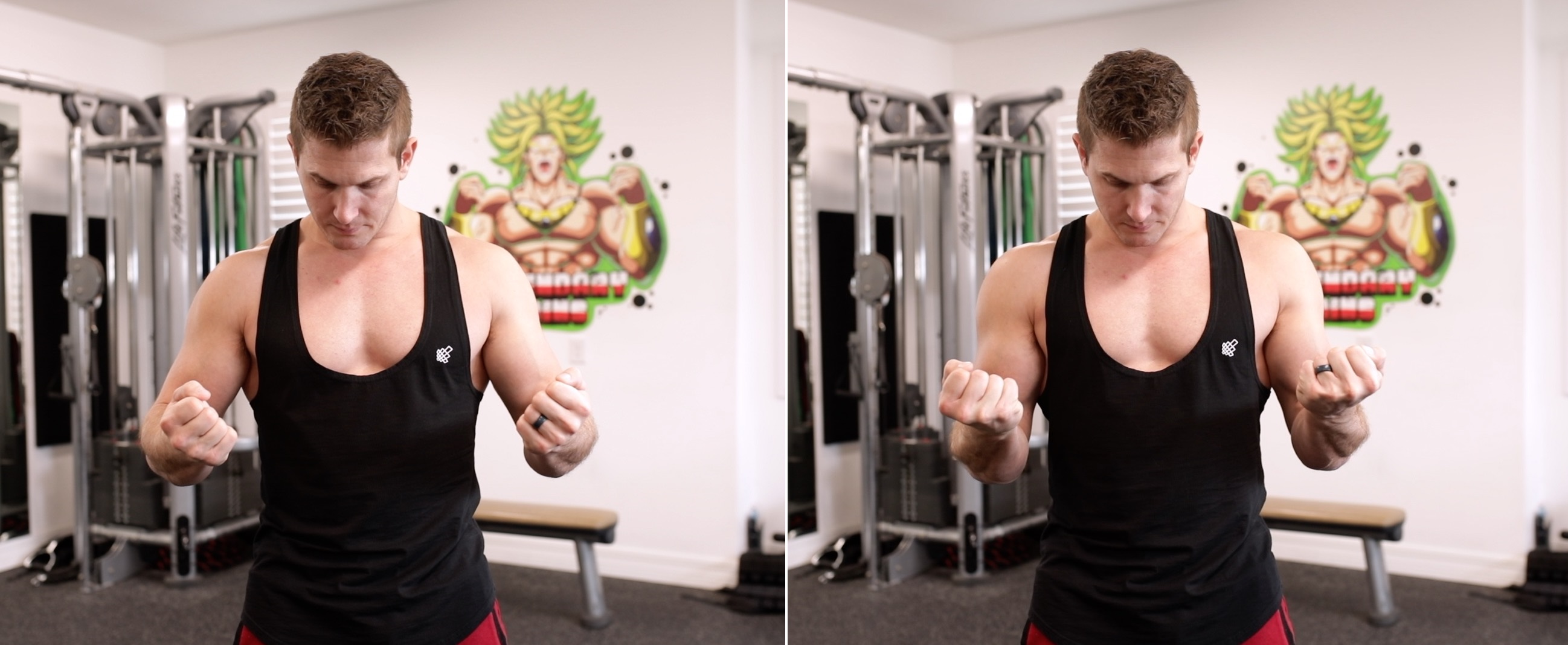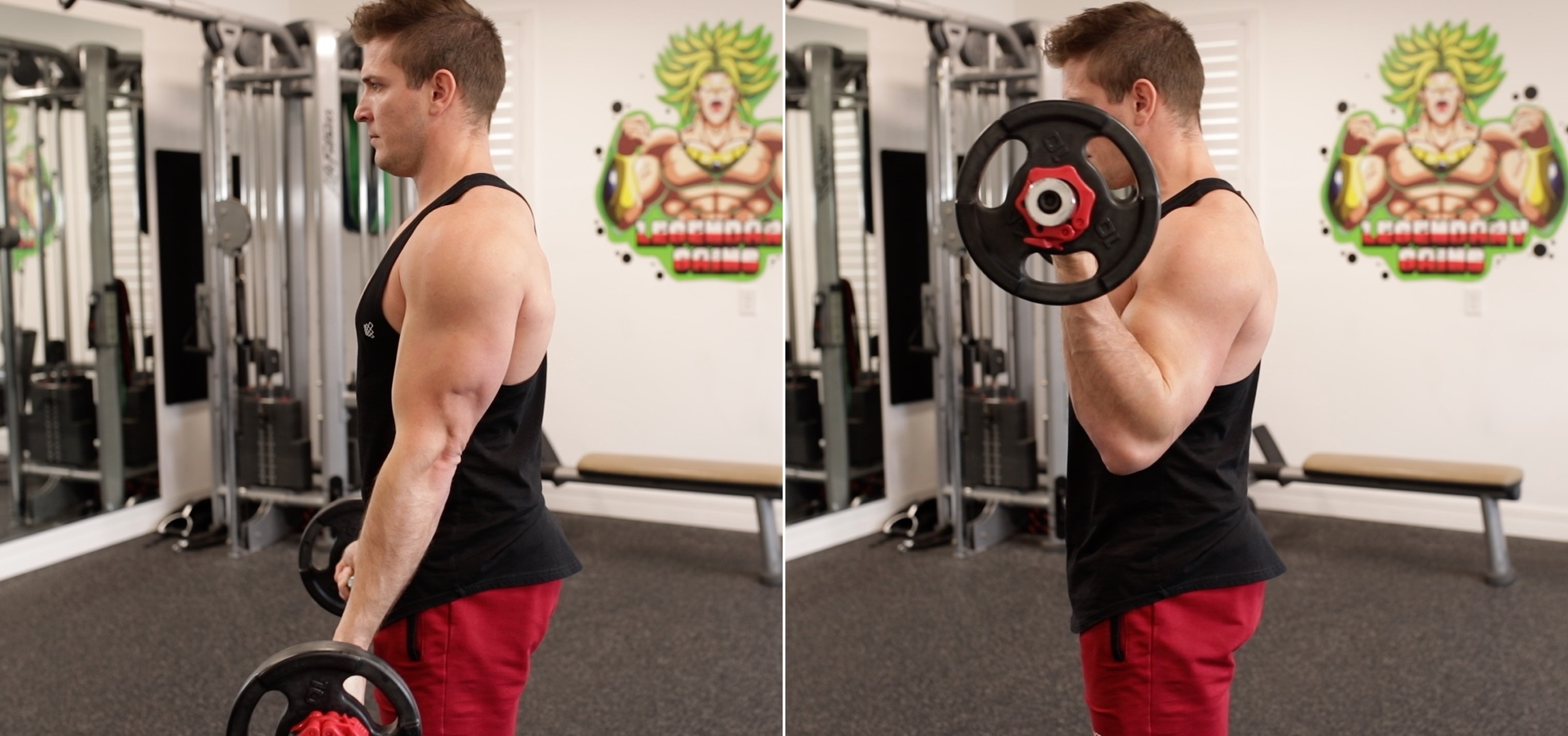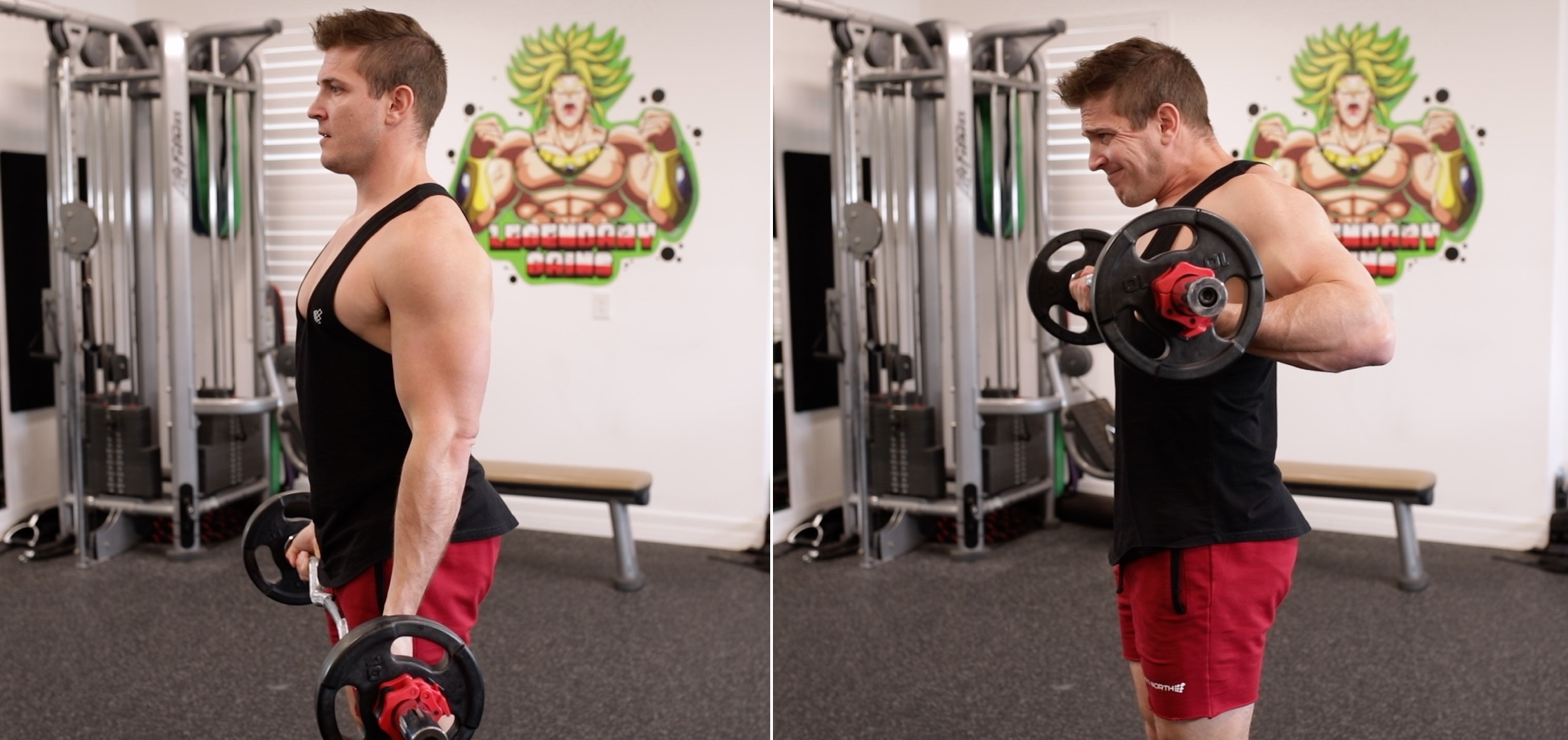3 Hacks For Bigger Biceps!
GOODBYE NOODLE ARMS!
Today I’m going to show you THREE super helpful hacks that you can apply to any biceps exercise to make it more effective for building muscle and strength. Let’s dive right in!
Hack #1 – Learn To Engage BOTH HEADS Of The Biceps
I’m willing to bet that after this hack alone… a lot of lightbulbs are going to go off!
I want you to stop whatever you’re doing with your hands right now and hold them in front of you like this.
Next, squeeze your pointer and middle fingers as hard as you can while making a fist. You’ll notice as you do this your hands will slightly “pronate” and your elbows will kick out and away from your torso.

Now make a fist again, except this time focus on squeezing your pinky and ring fingers. Your hands should’ve slightly supinated and your elbows should’ve moved closer to your torso.

But what does this have to do with biceps engagement? Well, think about it like this. We all know that a wide-grip targets more inner biceps head and a close-grip targets more of the outer biceps head and that’s because as your elbow flexes and we add external resistance, your biceps activate to support supination of the forearm.


But even when using a “wide-grip”, if you’re not focusing on squeezing the barbell with your entire hand, especially your pinky and ring finger, you will instinctively flare your elbows to try to get “under” the barbell more to make it easier to curl and the flared elbows will cause a bit of pronation of the wrist which will affect your grip on the barbell as well as how hard you contract your inner biceps head.


So the overall message here is that even though a “wide-grip” targets more inner head, and a close-grip targets more of the outer head of the biceps, we can still maximize overall biceps engagement on any variation of a curl by first getting our grip right regardless of hand position.

Hack #2: Elbow Awareness
What your elbows are doing during a biceps curl is a big deal because when they’re FULLY EXTENDED that’s what’s known as the “sticking point” or the hardest part of the movement, which is also why most people skip it… because you can lift more weight for more reps if you never fully extend your elbow.

So when training with most standing or seated versions of the biceps curl, your elbows should be in line with your hips or slightly in front as you perform your reps. Now, if you’ve never focused on elbow placement before, I want you to make a real conscious effort to ensure your elbows don’t travel behind your body as you lower the weight.
The eccentric or negative phase of the curl is where you get the most muscle breakdown for growth and keeping those elbows in line or slightly in front of your hips when lowering the weight will maximize the overall stress on your biceps.

However, there ARE exercises that do focus on your elbows traveling “behind” your hips like a “Biceps Drag Curl” and this variation of the curl will maximize the involvement of the biceps at peak contraction because bringing your elbows behind your body takes the pressure off your front deltoids.

Now If you want to learn more about Different Biceps Curl variations you should check out my VERSUS series as I cover quite a few curl variations and how and to implement them correctly in your programming.
But the main takeaway here is that elbow placement DOES matter depending on “HOW” you want to target your biceps. So, don’t just curl without any sort of direction or reason to what you’re doing.
Hack #3: Introducing “Metabolic Stress” To Your Workouts
So you’ve mastered your biceps grip from HACK #1, you’re laser focused on the positioning of your elbows from HACK #2 and now you’re ready to make your workouts MORE intense for more biceps growth. Well, if you’re a sadistic sick freak like me… you’re really going to enjoy this!
Introducing DROP SETS! Now what makes drop sets so great is that you can introduce more training volume to your workouts without having to really add much more time. This is because they take advantage of the muscle building mechanism “Metabolic Stress” which is what happens when you do lots of repetitions and sets with short rest periods.
Article Link: Am I Not Growing Muscle If I'm Not Sore?
But you can do drop sets a few different ways and typically I like to teach a beginner and advanced version to my clients.

So, if you’re new to drop sets, start here:
- Aim to complete 6 to 8 reps with good form. That means focusing on both the concentric and eccentric portions of the movement and use as much weight as you can handle for that rep range.

- Then, as soon as you finish those 6 – 8 reps you’re going to drop the weight by about half and complete 12 to 15 reps for a burnout.

I’m not going to lie, you’re going to feel a burn in your biceps that you’ve probably never felt before. But this is important because learning to push through your reps while your muscles are screaming is going to help a lot of you learn what it feels like to break through your limits!
Now the more advanced version of drop sets is a bit more intense because we’re going to add one more drop, but it’s a drop with a very specific purpose.
- Once again start with 6 – 8 reps, but this time you’re going to overload as heavy as you can without cheating too much. This means you CAN use a little momentum on the concentric phase, but you’re still REALLY focusing on controlling the negative.

- As soon as you finish, drop the weight by about 15 to 20lbs and complete another 6 – 8 reps with perfect form. No momentum at all. Just a strong contraction to the top and a controlled negative.

- And THEN, once you’ve complete those reps you’re going to drop the weight in half and burnout the set with another 12 – 15 reps.

Typically rest periods when doing drop sets is about 2 minutes between sets and you won’t need more than 3 sets per exercise. In fact, I guarantee that most of you are going to train with more volume from completing 3 sets of just ONE exercise than you do in your current workout routine.
Some might even say this is overtraining, but that’s just because some people are just looking for any excuse to not have to train hard. So don’t listen to them and just remember they have small biceps for a reason!






